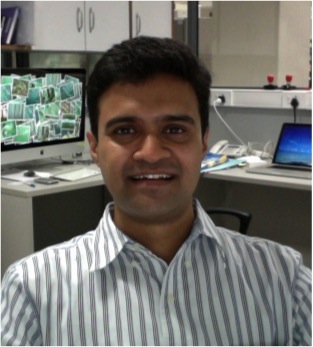
Professor
E-mail: sivaram at rcb dot res dot in
Cell Division, Intercellular Communication and Cellular Dynamics
Our research group is interested in illuminating the fundamental molecular mechanisms regulating cell division and intercellular communication, with the aim to elucidate their impact on important biological processes. In the long term, we would like to exploit this detailed knowledge to design strategies for amelioration of disease conditions.
Mammalian cells divide with a high degree of fidelity, ensured through tight molecular regulation of multiple pathways, to generate two daughter cells that contain the correct diploid complement of chromosomes. Elucidation of the molecular mechanisms of mitotic regulation is imperative to understand the basis for asymmetric stem cell division leading to differentiation, for understanding early development of multicellular organisms, as well as for potential therapeutic intervention in major diseases such as cancer.
We are studying molecular events controlling the metaphase to anaphase cell cycle transition, monitored by the Spindle Assembly Checkpoint, and dissecting the role of the ubiquitous molecular motor, cytoplasmic dynein, in regulating multiple facets of this process. We are also exploring molecular control of cytokinesis, the terminal step of mitosis, to understand the role of both molecular motors and vesicular traffic in ensuring completion of cell division. Intricate knowledge of molecular mechanisms that control cell division could be exploited to design highly specific counter-measures to control cell division and consequently diseases like cancer.
Independently, we are probing the molecular basis for biogenesis and function of tunneling nanotubes - thin, tubular cytoplasmic connections between cells - a relatively novel mode of intercellular communication seen in several eukaryotes. These structures play important roles in various cellular processes underlying health and disease, such as in cancer metastasis and intercellular pathogen transmission. However the molecular mechanisms controlling their formation and function remain poorly understood. Knowledge of how these nano-conduits form and function, how they are hijacked by microbial pathogens for efficient intercellular transmission and how they are subverted for the benefit of cancerous cells could be used to design novel and specific therapeutic strategies.
Our approach to answering the above questions is multi-pronged. We employ cell biological studies, high-resolution and super-resolution optical microscopy including live cell imaging, biochemistry, proteomics, biophysical and structural biological approaches. We have extended our studies to two model organisms, the invertebrate Caenorhabditis elegans and the vertebrate zebrafish, to understand how these molecular mechanisms shape organism development.
We invite excellent and motivated recent PhDs in the life sciences to contact the PI directly for applying to prestigious postdoctoral fellowship opportunities. Students who have recently submitted their PhD thesis are also welcome. The lab has mentored competitive young postdoctoral fellows with similar/ complementary expertise as the lab, to enable them to progress to the next stage of their careers.
Motivated candidates interested in pursuing postdoctoral research (recently awarded or submitted PhDs) are encouraged to contact the PI directly for applying to prestigious postdoctoral fellowship opportunities (such as the India Alliance DBT-Wellcome Trust Early Career Fellowship, DST-INSPIRE fellowship, SERB-NPDF, DBT-RA etc.) at least 3 months before the expected submission deadline. We also invite motivated students interested in pursuing doctoral research (leading to a PhD) or joining the lab as Integrated MSc-PhD students to write to the PI.
Dr. Sivaram V S Mylavarapu
Professor
Regional Centre for Biotechnology
NCR Biotech Science Cluster
3rd Milestone, Faridabad-Gurgaon Expressway
P.O. Box No. 3, Faridabad - 121 001
Haryana (NCR Delhi), India
E-mail: sivaram at rcb dot res dot in
Phone: 91 129-2848830